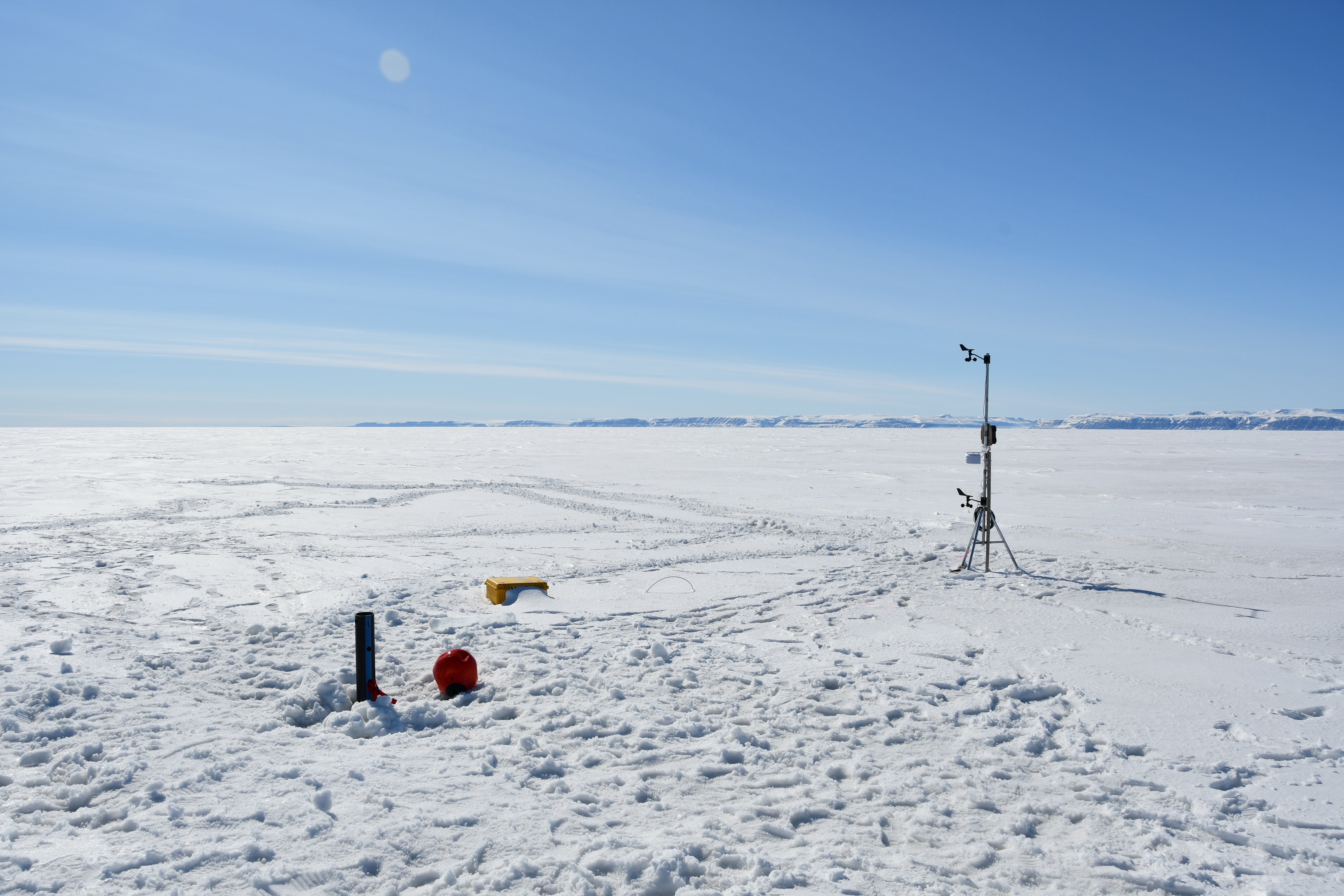Landfast Ice Breakup

Admiralty Inlet field site after instrument deployment Spring 2019. (C. Patterson)
Landfast sea ice is an important platform for travel, hunting, and the floe edge tourism. Recent changes to the Arctic climate have resulted in changes to ice thickness and spring-time weather. This has made it more difficult to predict when breakup will occur based on traditional signs. We hope to make travel safer by developing a model that uses information such as winds, currents, temperature and ice thickness to predict when there is a high risk of landfast ice breakup in Admiralty Inlet. This information would be available on the internet.
This work is being done for and with the community of Arctic Bay and we want to work with the community to develop a product that provides the most important information to local users in a format that is straight forward and easy to understand.
Our first field program occurred in Spring 2019 where three scientists from Carleton University took measurements and deployed instruments, such as a weather station, on the landfast ice. This information will help us develop a landfast breakup risk model. In addition to the field program, SmartIce partners conducted workshops in Arctic Bay to document traditional Inuit knowledge about landfast ice breakup.
The 2019 field team from Carleton included adjunct research professor Greg Crocker as well as MSc students Ada Loewen and Calder Patterson. Adrienne Tivy and Trevor Bell are co-investigators.
The following video summarizes some of the work that has been done from 2019-2021 on this project. We still have many questions about sea ice break-off in Admiralty Inlet and hope to continue working with community members in Ikpiarjuk to learn from each other about sea ice break-off.
English version:
Inuktuk version (thanks to Mishak Allurut for translation):
Time Lapse Cameras
Time lapse cameras were deployed from June to August in 2019 and 2020 in different locations on the shore of Admiralty Inlet. These cameras took photos every 15 minutes throughout the break-up season and the images from both cameras are shown in the above video. The rise and fall of the ice cover with changes in the tides can be seen. The development of melt ponds and enlargement of leads occurs as the summer progresses until the ice completely breaks up and clears away.
Satellite Imagery
Daily NASA MODIS image mosaics from March 1 to July 31 were used to create time lapse videos of ice in Admiralty Inlet for each year from 2000 to 2020. These videos can be viewed below.
More resources:
A field report for the 2019 season is available here.
Ada Loewen’s MSc thesis “Landfast Sea Ice Break-up Processes in Admiralty Inlet, NU” is available here: https://doi.org/10.22215/etd/2020-14249.
Loewen, A., Allurut, M., Crocker, G., Patterson, C., Mueller, D., Tivy, A., and Bell, T. (2021), Understanding landfast ice break-off in Admiralty Inlet, NU, presented at ArcticNet Annual Scientific Meeting 2021, 6-10 Dec.
Loewen, A., Crocker, G., Mueller, D., and McKenna, R. (2021), Observations and modelling of landfast ice breakout events in Admiralty Inlet, NU, C34B-08 presented at 2021 Fall Meeting, AGU, 13-17 Dec.
Patterson, P., Tivy, A., and Mueller, D. (2021) Climatology and potential predictability of fast ice breakoff events in Admiralty Inlet, Nunavut, presented at ArcticNet Annual Scientific Meeting 2021, 6-10 Dec.
Support
This pilot project in Arctic Bay was made possible through support of the Climate Change Preparedness in the North Program (Crown-Indigenous Relations and Northern Affairs Canada).
